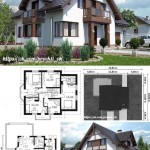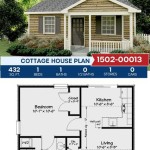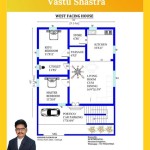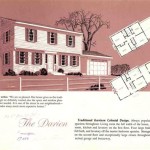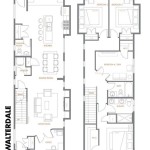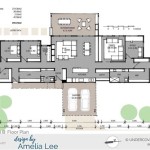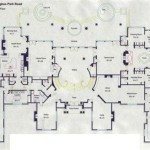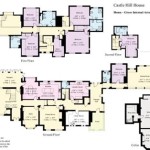Understanding the Power of 3D Plan House Images
3D plan house images have revolutionized the way architecture, interior design, and real estate are visualized and presented. They provide a comprehensive and realistic representation of a proposed dwelling, enabling clients, builders, and designers to understand spatial relationships, design features, and overall aesthetic appeal far more effectively than traditional 2D blueprints. This article explores the benefits, applications, and technical aspects of 3D plan house images, elaborating on why they are becoming an indispensable tool in the modern construction and design industries.
Traditionally, architectural plans were presented as 2D drawings, which required specialized knowledge and spatial reasoning skills to interpret accurately. Homeowners and other stakeholders who lacked architectural expertise often struggled to fully grasp the design intent and potential of a proposed building. This could lead to misunderstandings, dissatisfaction, and costly revisions during the construction process. 3D plan house images address these challenges by offering an accessible and intuitive visualization of the final product.
A 3D plan house image is more than just a pretty picture; it's a powerful communication tool. It allows stakeholders to experience a virtual preview of the finished home, fostering better understanding and collaboration among all parties involved. The ability to visualize the space in three dimensions reduces ambiguity and allows for informed decision-making throughout the design and construction phases.
Enhanced Visualization and Communication
The primary advantage of 3D plan house images lies in their superior visualization capabilities. These images provide a realistic representation of the proposed building, incorporating elements such as wall finishes, flooring, furniture, lighting, and landscaping. This level of detail allows viewers to experience the space as if they were actually walking through it, fostering a deeper understanding of the design and its potential impact.
This enhanced visualization significantly improves communication between architects, designers, builders, and clients. By presenting the design in an easily understandable format, 3D images minimize the risk of misinterpretation and ensure that everyone is on the same page. This facilitates a more collaborative design process, allowing for more effective feedback and revisions.
Furthermore, 3D plan house images can be used to explore different design options and variations. Architects and designers can quickly create multiple versions of the same plan, showcasing different color schemes, material selections, and furniture arrangements. This allows clients to compare different options and make informed decisions based on their preferences and needs. The flexibility of 3D modeling enables iterative design improvements, resulting in a final product that is tailored to the client’s specific requirements.
For example, a client might be unsure about the best placement of windows to maximize natural light. A 3D plan house image can be used to simulate the effects of different window placements at various times of day, allowing the client to visualize the lighting conditions and make an informed decision. Similarly, different flooring options can be easily compared and contrasted in a 3D rendering, helping the client choose the most suitable material for their needs and aesthetic preferences.
Moreover, 3D plan house images are not limited to static representations. Advanced rendering techniques allow for the creation of interactive walkthroughs and virtual tours, enabling users to explore the building from any angle and at any time. This immersive experience provides an even deeper understanding of the space and its design features.
Improved Marketing and Sales Performance
In the real estate industry, 3D plan house images are a powerful marketing tool. They can be used to showcase properties that are still under construction or in the planning stages, attracting potential buyers and generating interest in the development. High-quality 3D renderings can create a compelling visual narrative, highlighting the key features and benefits of the property and enticing buyers to make a purchase.
Traditionally, real estate agents relied on 2D floor plans and artist renderings to market properties. However, these materials often lack the realism and detail necessary to capture the imagination of potential buyers. 3D plan house images, on the other hand, offer a more immersive and engaging experience, allowing buyers to visualize themselves living in the property and experiencing its unique features.
3D renderings can be used in a variety of marketing materials, including brochures, websites, and online advertisements. They can also be incorporated into virtual reality (VR) and augmented reality (AR) applications, allowing potential buyers to experience the property in an even more realistic and interactive way. The use of VR and AR technology is becoming increasingly popular in the real estate industry, as it provides a powerful tool for engaging potential buyers and driving sales.
Furthermore, 3D plan house images can be used to showcase different interior design options and furniture arrangements, appealing to a wider range of potential buyers. This allows developers to target specific demographics and tailor their marketing efforts to the needs and preferences of their target audience.
The use of 3D plan house images can also help to reduce the time and cost associated with traditional marketing methods. By providing a realistic representation of the property, 3D renderings can minimize the need for costly physical models and on-site visits. This can save developers significant time and money, while also improving the effectiveness of their marketing efforts.
For example, imagine a developer is selling pre-construction condominiums. Instead of relying on a bare concrete structure and 2D blueprints, they can use 3D plan house images to show potential buyers exactly what the finished unit will look like. They can showcase different flooring options, kitchen layouts, and furniture arrangements, allowing buyers to customize their unit and make informed purchasing decisions.
Technical Considerations and Workflow
The creation of 3D plan house images involves a complex workflow that requires specialized software and expertise. Architects and designers typically use computer-aided design (CAD) software to create the initial 3D model of the building. This model is then imported into a rendering engine, which is used to add textures, lighting, and other visual details.
Several different rendering engines are available, each with its own strengths and weaknesses. Some rendering engines are better suited for creating photorealistic images, while others are optimized for speed and efficiency. The choice of rendering engine will depend on the specific requirements of the project and the desired level of realism.
The process of creating a 3D plan house image can be time-consuming and labor-intensive, especially for complex designs. However, advancements in technology are constantly improving the efficiency and automation of the rendering process. For example, artificial intelligence (AI) is being used to automate tasks such as lighting and texture placement, reducing the amount of manual work required.
The quality of a 3D plan house image is highly dependent on the skill and experience of the artist or designer. A skilled artist can create stunningly realistic renderings that accurately represent the design intent and aesthetic appeal of the building. A poorly executed rendering, on the other hand, can be misleading and detract from the overall presentation.
It’s important to note that the cost of creating 3D plan house images can vary significantly depending on the complexity of the design, the desired level of realism, and the experience of the artist or designer. Developers and architects should carefully consider their budget and requirements when selecting a rendering service provider.
The workflow often involves several stages, including initial model creation, texturing and material application, lighting setup, rendering, and post-processing. Each stage requires careful attention to detail to ensure that the final image is accurate, realistic, and visually appealing.
For example, consider the process of adding textures to the walls and floors. The artist must carefully select textures that are appropriate for the design style and material properties. They must also ensure that the textures are properly scaled and aligned to create a realistic appearance. Similarly, the lighting setup must be carefully considered to highlight the key features of the building and create the desired mood and atmosphere.
Moreover, the choice of software is crucial. Popular options include AutoCAD, Revit, SketchUp (often with V-Ray or Lumion for rendering), and 3ds Max. Each offers different capabilities and learning curves, influencing the overall workflow and final product quality.
In conclusion, 3D plan house images are revolutionizing the architecture, design, and real estate industries by offering enhanced visualization, improved communication, and powerful marketing capabilities. As technology continues to advance, these images will become even more realistic, interactive, and accessible, further transforming the way buildings are designed, constructed, and marketed.

How Much Do 3d House Plans Cost Faqs Answered Cedreo

Sweet Home 3d Draw Floor Plans And Arrange Furniture Freely

Make 3d House Plans And Rendering

How Do You Make A 3d Floor Plan

1000 3d Floor Plans And Home Design Ideas To Build Free Plan House Imagination Shaper

Sweet Home 3d Draw Floor Plans And Arrange Furniture Freely

What Is 3d Floor Plan How To Make It Benefits Cost

20 Designs Ideas For 3d Apartment Or One Y Three Bedroom Floor Plans Home Design Lover House Plan 3

3d Floor Plans

Benefits Of Using 3d House Floor Plan Design

